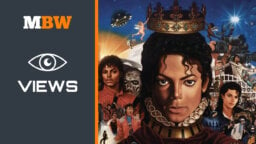The following op/ed comes from UK-based Hunter Giles (pictured inset), who co-founded and leads Infinite Catalog, a royalty accounting software + service company.

Profit-share record deals – sometimes called “50/50 deals,” in reference to their most common form – have been used by indie labels for decades.
Compared with the major label-style, Kanye-tweet-worthy, 80-page-long deals of old, they also happen to be perfectly suited to an era of rapidly expanding ways to earn money from music, be it from streaming, gaming, the metaverse, wherever.
For evidence that profit-share deals are indeed the way of the future – and how their continued adoption could yield a more transparent and profitable industry – look no further than the recent Four Tet vs. Domino dust-up.
“They have recognised my original claim, that I should be paid a 50% royalty on streaming and downloads, and that they should be treated as a license rather than the same as a CD or vinyl sale.” So tweeted Kieran Hebdan, aka Four Tet, in a bodacious thread.
What’s on display here is the tension between those old school contracts (sometimes called “royalty-based,” or “PPD” deals) that were built for an analog world, and the modern-day environment we actually live in.
Now strap in, it’s about to get a bit wonky…
In old-school deals, a royalty rate (18% in Hebden’s case) gets applied not to the income actually collected by the label, but instead to pre-agreed amounts called the “Published Price to Dealer (PPD)” or “Suggested Retail List Price (SRLP)”.
This means the label can just track the units rather than all that pesky income: e.g. 100 cds sold * $10/ppd per CD * 18% = $180 in royalties for the artist.
The income actually collected by the label is, again, notably irrelevant to what’s being accounted on the royalty statement.
These “PPD deals” (as we’ll now refer to them) make even less sense for digital income.
Streaming rates change every month at most DSPs, and further, there are dozens or hundreds of different “types” of streams/downloads (free/freemium/paid/ad supported/cloud/off-line/etc.), all yielding different and ever-changing rates across hundreds of different DSPs.
So you can’t really set a standard PPD amount, nor can you find a “real” quantity “sold” (and indeed there is no sale, with streaming anyway). Instead, labels end up applying that same 18%-or-similar royalty rate to the actual income collected after all… just like in a profit-share deal, where rates are more typically around 50%.
So profit-share tends to be a lot more equitable, not to mention transparent – the artist actually knows what the label is earning for their efforts. These characteristics would seem to be a nice fit for an increasingly artist-centric age.
But that alone isn’t going to be responsible for the continuing shift towards profit-share – it’s the explosion of new, undreamt of ways to earn money from music.
Profit-share deals are simply more adaptable – they don’t need to lock anyone into rates for one thing, and then apply it to “any media now known or hereafter devised,” as the old-school deals so often put it. Everyone involved agrees to share the costs and the profits, transparently, wherever they may come from.
If that sounds like Web3 talk, you’re not far off, but we don’t need blockchain to do it, and indeed independents (not to mention managers, business managers, etc) have already been doing it for decades.
The music industry’s profit-share future is already here, it’s just not evenly distributed – yet.Music Business Worldwide




